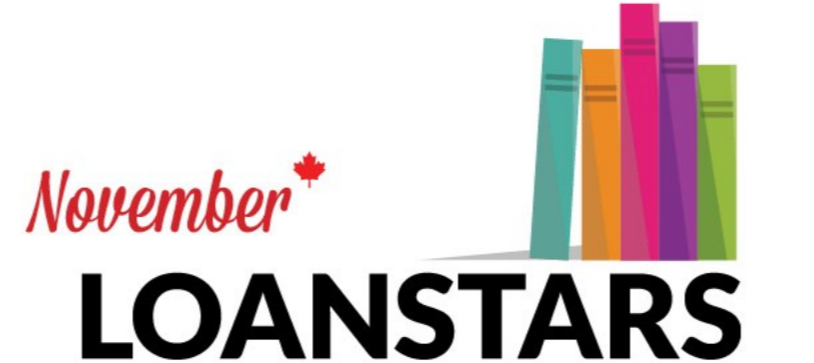As we navigate through the third wave of the pandemic, our eyes on the recent Chauvin trial, and fighting against the surge of Anti-Asian racism, we wanted to continue the conversation we started in February about the popularity of anti-racism books among Canadian readers, by bringing in library circulation data for these books from public libraries across the country.
A recap on sales for books about anti-racism in 2020
In our February podcast we used data from BNC SalesData to explore the sales of 25 books about anti-racism and social justice month-to-month in 2020.
A quick recap:
We found that sales of these books trended down from January to April, until an increase of 87% from April to May.
Sales attained new heights from May to June seeing an increase of 955%, and they reached their 2020 peak between June and July after an additional 14% increase.
From July to October, sales trended downwards, until November and December when they increased by 35%, presumably for the holiday shopping season.
This being said, buying books isn’t the only way that Canadians acquire the books they read.
According to our Canadian Book Consumer survey released earlier this year, 33% of Canadians bought a new print book in 2020, comparable to the 32% who borrowed a book from a public library.
If recent events had a direct impact on book buying, did they also have an impact on book borrowing?
For this analysis, we used the same list of 25 books about race and race-related topics that we used for the sales analysis in our February podcast. These were titles that were featured in multiple reading lists during the summer of 2020.
Like Nataly Alarcón mentioned in the podcast, generally books that touch on social justice and race-related topics aren’t grouped together under a specific subject category. They’re usually classified under different subjects. Of our 25 titles, 48% of these books fall into the Social Science subject category, followed by 20% are Biography & Autobiography, 12% are History, and the remainder are divided among Law, Political Science, and Literary Collections subjects.
Enough preamble — let’s get into the data!
Loans vs. sales
Using BNC LibraryData, our new service that collects weekly circulation data from libraries across Canada, we pulled weekly data on loans, holds, renewals, collection holdings, and other circulation data for all 25 titles. These weekly reports are from an average of 74 library branches, spread across the 25 library systems nationwide that report to BNC LibraryData. Here’s what we found:
Prior to the COVID-19 pandemic, the 25 books we identified were already quite popular amongst Canadian book borrowers. Looking at the graph on the left, you can see that these books were being loaned consistently from January to mid-March. From mid-March to May, the number of library loans suddenly plummets and reaches rock bottom as libraries across the country are closed to patrons during the first wave of the pandemic. In June, as libraries begin to reopen, the number of loans for these books begins to steadily increase over the weeks to reach their peak in mid-November and stay elevated until the end of the year. While this increase from June to November is astronomical, the difference between the peak in mid-November and the popularity of these books pre-pandemic is an increase of just 38%.
This looks quite different from the sales of these 25 books about race and race-related topics in 2020, compared in the graph on the right, where there is a distinct one-time increase in sales from June to July, that tapers off into December.
Library book loans
Book sales
But, as avid library goers will know, there’s a lot more to library circulation than just loans.
What about holds?
With a limited number of copies in the library for each of our 25 titles, book borrowers often ended up putting those they want to read on hold. As you can see in the graph on the left below, the number of holds for these books started to increase from January to March until it plateaued during library closures from March to May. When libraries re-opened in June, the number of holds for these books skyrocketed, seeing an increase of 130% by September, then tapering off into the end of the year.
On the other hand, for those Canadians who had already taken out one of the books we’re tracking, the graph on the right shows the number of times these books were renewed by library patrons. Interestingly, January to March saw big numbers of renewals for these books. This number plunges in mid-March as libraries close down and stays low until it begins to slowly increase from July to the end of the year. Taking the entire year in view, there is a 20% decrease in renewals from the pre-pandemic to post-pandemic peaks.
Library book holds
Library book renewals
Why such a decrease? It’s unclear whether Canadians have started reading faster since the pandemic, but what’s for sure is that you can’t renew a library loan if another patron has the book on hold. If you compare the two graphs above, you’ll notice that the biggest increases in the number of renewals at the end of the year coincides with a decrease in the number of holds. This interplay between holds and renewals ultimately depends on one major factor: the number of these books available at the library.
As demand increased, so did the copies
Just how limited are the number of copies of our 25 titles in Canadian libraries? As the demand for these books increased over 2020, so did the number of copies available to book borrowers. From January to December, the number of copies of these books held in library collections increased by 101%. In the graph on the left below you can see a steady increase in the number of orders for these books being placed by libraries looking to put more copies on their shelves. Starting in June and reaching its height at the end of September, there's an increase in ordering of 189% compared to pre-pandemic numbers.
More copies owned by libraries means more copies that can go out on loan to Canadian readers. From the re-opening of libraries in June to the end of the year, there is a 155% increase in the number of copies of these books taken out by Canadians, shown in the graph on the right.
Library copies on order
Library copies in circulation
With Canadian libraries holding more books than ever before on social justice and race-related topics, Canadian readers are spurring change in library collections by borrowing, holding, and renewing the 25 books we’ve been following at increasing rates.
Even though the sales of these specific 25 books have dwindled, they're having a long life in the library and on the reading lists of Canadians.




















The latest news out of the European Commission.